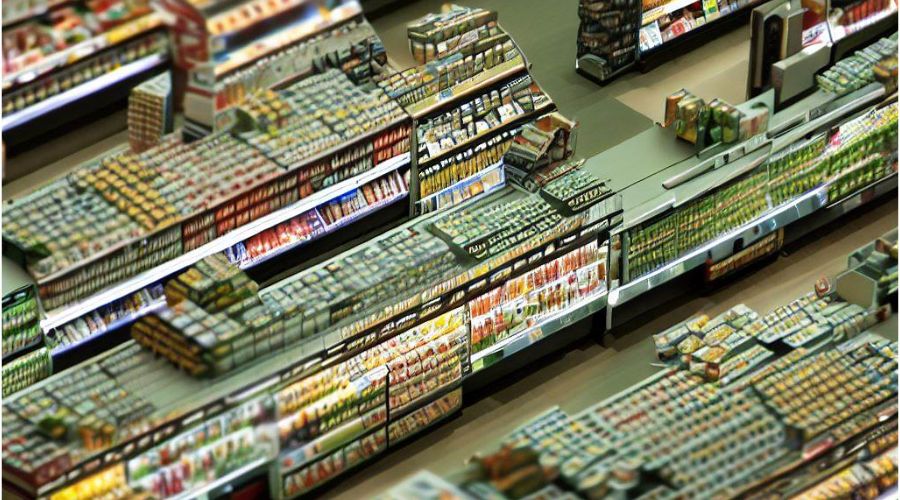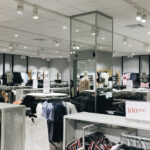The success of any supermarket relies not only on the variety of products available but also on how these products are presented. Strategic retail shelving plays a significant role in influencing purchasing behavior and shopping experience.
In this article, we will delve into how to understand the psychology of consumer behavior. The strategic use of shelf height and effective product grouping for optimizing your supermarket sales.
Understanding the psychology of consumer behavior

To strategically position products on retail shelves, it’s crucial to comprehend the psychology of consumer behavior. The placement of goods can subtly influence shoppers’ decisions, steering them towards purchasing more items or choosing higher-value products.
A fundamental principle to consider is the ‘decoy effect’. It is when retailers place higher-priced items next to moderately priced items. This makes the latter seem more attractive and reasonable. Similarly, you can encourage impulse buying by placing small, lower-priced items near the checkout counters.
Understanding customers’ shopping patterns also plays a role. For instance, most customers tend to move counterclockwise around stores. Placing high-demand or high-profit items at the right of the entrance can increase their visibility and, in turn, their sales.
The importance of shelf height
The height at which products are placed on supermarket shelves can significantly impact their visibility and sales. Generally, products placed at eye level tend to sell the most as they are directly in the line of sight of customers.
High-profit items or best sellers are typically placed at eye level. While cheaper or lesser-known brands are positioned on lower or higher shelves. Furthermore, you should place children’s products at a lower height to be within their eye level. Understanding and utilizing these strategies can help maximize product visibility and sales.

The effect of product grouping and pairing
Product grouping and pairing is another strategic element of retail shelving. This involves arranging products that people often buy together in close proximity. For instance, placing pasta sauce next to pasta, or chips near soda, can encourage customers to purchase both items.
Thematic grouping is another effective strategy. You should group products based on themes like holiday items, back-to-school supplies, or summer essentials. This not only makes shopping more convenient for customers but can also inspire additional purchases.
Implementing planogram for efficient shelving
A planogram, often referred to as a POG, is a tool in the retail industry to visually map out and direct where and in what quantity products should be displayed. The term may be new to some, but the concept behind it is almost as old as retail itself. Organizing and optimizing retail shelf space is crucial for maximizing sales and ensuring a smooth and enjoyable shopping experience for customers.
What is a Planogram?
Essentially, a planogram is a detailed diagram or model that illustrates the placement of retail products on shelves with the aim to increase customer purchases. Its design can vary from a simple sketch to sophisticated 3D renderings, depending on the complexity and needs of the store.
Planograms go beyond just aesthetics. They create them with strategic objectives in mind. Such as optimizing the use of shelf space, boosting sales, improving inventory management, minimizing stockouts or overstocks, and enhancing customer satisfaction. These diagrams take into account the correlation between product placements and consumer buying behavior.

Recommendations for Implementing an Efficient Planogram
Implementing a planogram requires careful thought, precision, and continuous refinement. Here are some key considerations when designing a planogram:
- Understand Your Customers: Knowing your customers’ preferences, habits, and behaviors is fundamental. Use data from sales history, customer feedback, and market research to inform your decisions on product placement.
- Product Hierarchies: Implement vertical and horizontal merchandising techniques. Vertically, place best-selling products at eye level, whereas, horizontally, place complementary products side-by-side to encourage additional purchases.
- Space Utilization: Not all products are equal. Some products may sell better, have higher margins, or be more popular than others. These products should be allocated more space.
- Accessibility and Visibility: Ensure that all products are easy to see and reach. It is frustrating for customers if they struggle to find or physically reach the products they are looking for.
- Consistency: Try to maintain consistency in your product placements. Constantly changing the layout can confuse regular customers and negatively impact their shopping experience.
- Seasonality: Keep in mind the time of the year and adjust your planogram accordingly. Feature seasonal items or promotions in high traffic areas.
- Testing and Refining: Continuously monitor and measure the performance of your planogram. Don’t be afraid to make adjustments based on the insights you gain.
- Train Your Staff: Once you have created your planogram, make sure to train your staff to understand it and know how to implement it correctly. Your planogram is only as effective as the staff that executes it.
By following these recommendations, your planogram will not only serve as a strategic guide for product placement but will also serve as an essential tool for maintaining organized, efficient, and effective inventory management. With an efficient planogram, you’re well on your way to maximizing your sales and enhancing your customers’ shopping experience.
Conclusion
Strategic retail shelving is a nuanced and critical aspect of boosting supermarket sales. Supermarkets can significantly enhance their sales by understanding and implementing the psychology of consumer behavior. Optimizing the use of shelf height and employing effective product grouping.
Incorporating these principles into a well-structured planogram can further optimize these strategies, ensuring consistency and balance across all shelves. With these strategies in place, supermarkets can significantly enhance their customer experience and bottom line.
If you are interested in maximizing sales in your store, make sure to check out these articles:
There you will find information about furniture placement, design, and advantages in your store, that you can use to your benefit.



